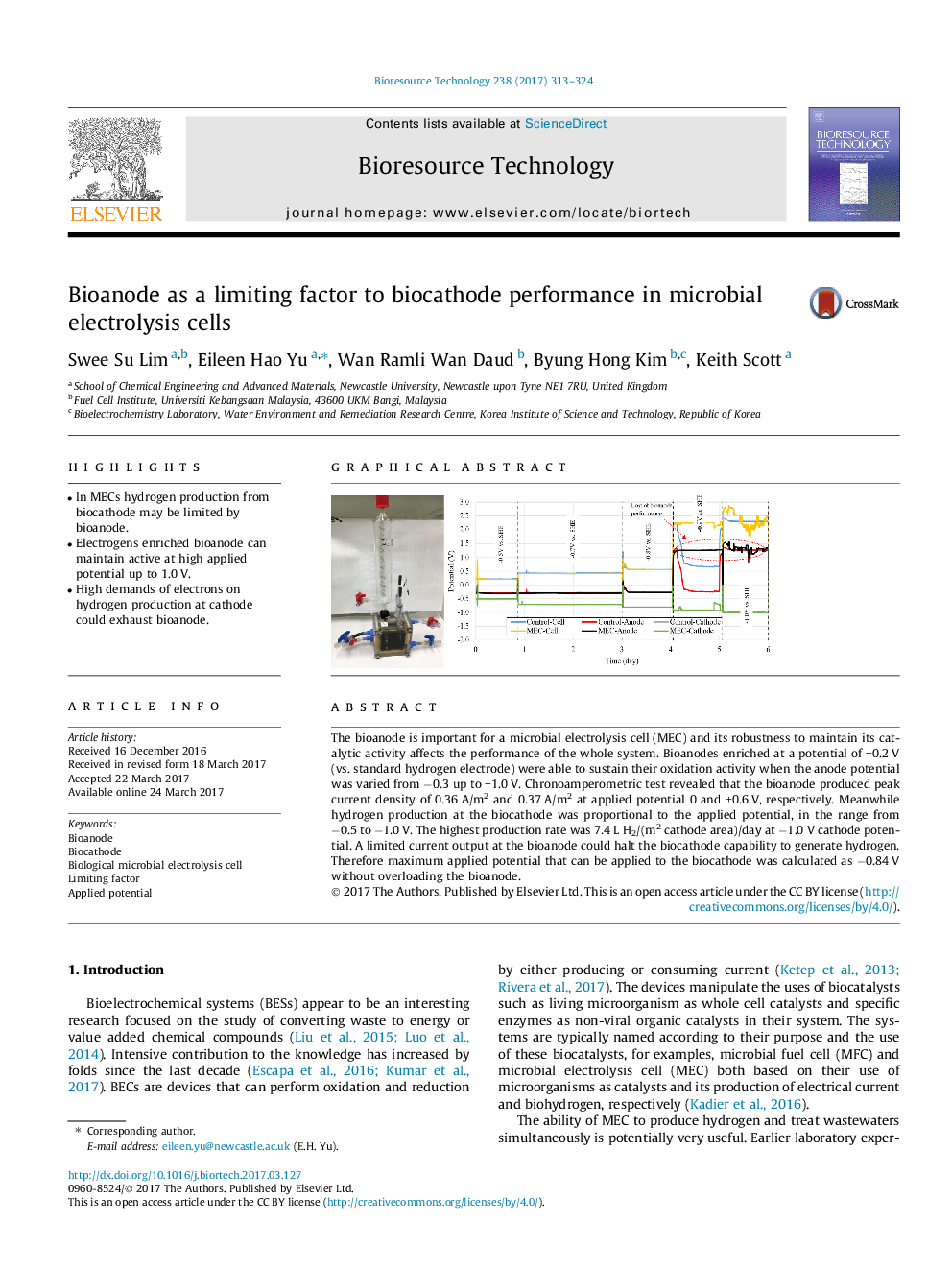| Article ID | Journal | Published Year | Pages | File Type |
|---|---|---|---|---|
| 4997241 | Bioresource Technology | 2017 | 12 Pages |
â¢In MECs hydrogen production from biocathode may be limited by bioanode.â¢Electrogens enriched bioanode can maintain active at high applied potential up to 1.0 V.â¢High demands of electrons on hydrogen production at cathode could exhaust bioanode.
The bioanode is important for a microbial electrolysis cell (MEC) and its robustness to maintain its catalytic activity affects the performance of the whole system. Bioanodes enriched at a potential of +0.2Â V (vs. standard hydrogen electrode) were able to sustain their oxidation activity when the anode potential was varied from â0.3 up to +1.0Â V. Chronoamperometric test revealed that the bioanode produced peak current density of 0.36Â A/m2 and 0.37Â A/m2 at applied potential 0 and +0.6Â V, respectively. Meanwhile hydrogen production at the biocathode was proportional to the applied potential, in the range from â0.5 to â1.0Â V. The highest production rate was 7.4Â L H2/(m2 cathode area)/day at â1.0Â V cathode potential. A limited current output at the bioanode could halt the biocathode capability to generate hydrogen. Therefore maximum applied potential that can be applied to the biocathode was calculated as â0.84Â V without overloading the bioanode.
Graphical abstractDownload high-res image (113KB)Download full-size image
